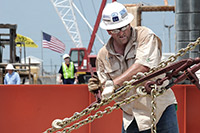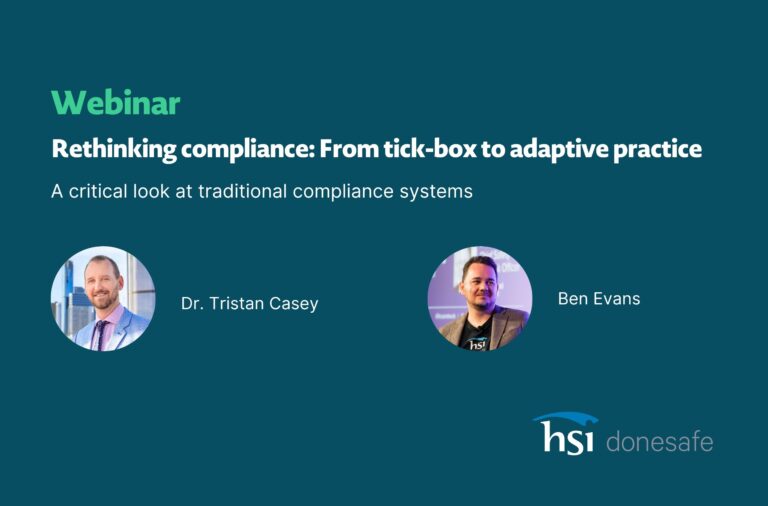
In 1997, Shell began work on the world’s deepest offshore oil rig; Ursa. This monster of a project would cost $1.45 billion and stand 48 stories tall. The men who worked on this project were no strangers to workplace injuries and death; it had all become part of the job. If someone died, they were afforded a 15-minute break to recover, and then it was back to work. That’s just how it was.
Well. That’s how it was until a 64-year-old French woman taught the men to cry and they saw an 84% reduction in incidents.
….
Wait, what?
In 1997, Rick Fox became the new asset leader for the Ursa project. Due to its scale, the risk of
serious incidents during its construction and operation were far greater than any other project Fox
had undertaken. Rightly so, this had Fox worried and seeking a new approach to management.
It was around this time that he received a call from Claire Nuer. Nuer, a leadership consultant, had
heard about the project and believed she could help. Her approach, however, was quite different
to what Fox had in mind.
Nuer’s approach to Health and Safety

Nuer believed that the key to making the Ursa project safe lay in teaching the workers to be more
open about their feelings.
Now, this unorthodox approach to health and safety was met with about as much enthusiasm as you
might expect from a group of burly, stiff-upper-lip, man’s-man, oil rig workers.
The sessions were intense, lasting from 6 am to 11 pm. The training encouraged the men to talk
about their lives, their hardships, and their worries. At first, the process was slow, but once one man
had done it though, more started. What they discovered was that there were a lot of unhappy
people with very hard lives on the rig. Some of the men report breaking down weeping, but none
report having anyone ever pull them up on it.
As the questions got harder and more personal, Nuer’s approach started to produce a distinct result;
the men lost their fear of vulnerability.
How a loss of fear of vulnerability resulted in an 84% reduction in workplace incidents:

The goal of this training was to improve workers’ communication by making them more open about their vulnerabilities. Communication is key to a good health and safety program, as it allows for the admission of mistakes and openness to learning. As a result of more open communication on the Ursa project:
- If workers didn’t know how to do something, instead of pushing forward they would ask for advice.
- If workers needed help with a task, like moving a heavy object, they would seek help instead of doing it themselves.
- Workers started looking out for each other. If someone looked like they needed help it would be offered.
- Workplace health and safety stopped being a dirty topic. Every worker there now had personal lives that mattered; therefore WHS became part of the conversation.
- The training the workers received improved not only their work lives but was reported to have resulted in better personal lives with their families. This improved mental health and wellbeing.
And of course, the project saw an astronomical 84% decline in workplace incidents. Because of its success, it was implemented company-wide.
From Harvard Business Review:
“Over the 15-year period these changes in work practices, norms, perceptions, and behaviours were implemented company-wide. The company’s accident rate declined by 84%, while productivity (number of barrels produced), efficiency (cost per barrel), and reliability (production “up” time) increased beyond the industry’s previous benchmark.”
-Harvard Business Review: https://hbr.org/2008/07/unmasking-manly-men
In short, there are a lot of oil workers out there who owe their lives to Claire Nuer.
As always, stay safe out there.
By Christopher Notley-Smith at donesafe.com
For a paperless, jargon-free business safety solution that you can manage from your phone, click here to get in contact and ask about how you can try Donesafe for FREE or visit our features page to find out more.
Sources
- https://hbr.org/2008/07/unmasking-manly-men – Accessed 8/8/2016
- http://www.npr.org/sections/health-shots/2016/06/17/482203447/invisibilia-how-learning-to-be-vulnerable-can-make-life-safer – Accessed 8/8/2016
- http://www.fastcompany.com/41051/life-board-gulf-mexico-oil-drilling-platform – Accessed 8/8/2016
- http://learnaslead.com/about/claire-nuer/ – Accessed 8/8/2016
- https://powerinyourhands.wordpress.com/tag/claire-nuer/ – Accessed 8/8/2016
- http://www.jweekly.com/article/full/10558/survivor-claire-nuer-conflict-resolution-expert-dies-at-66/ – Accessed 8/8/2016
Share:



